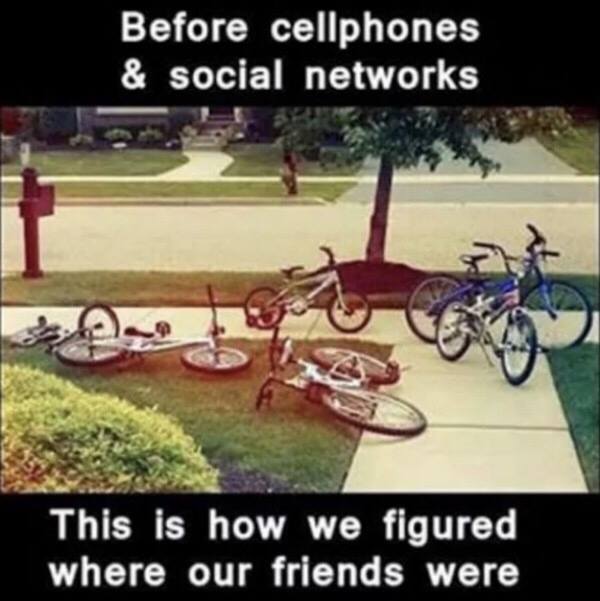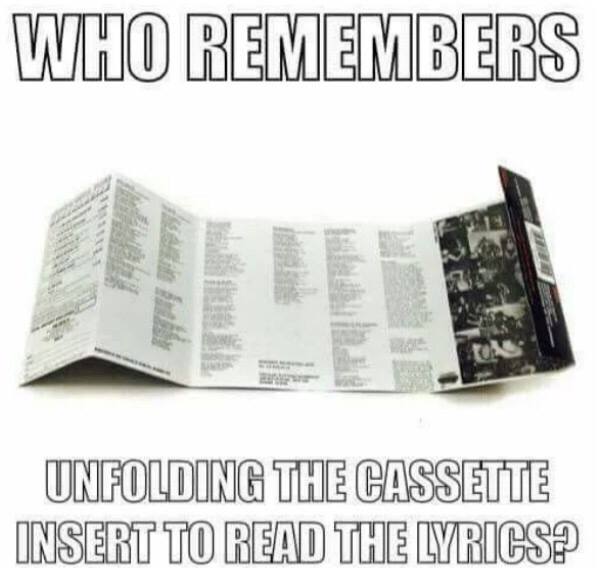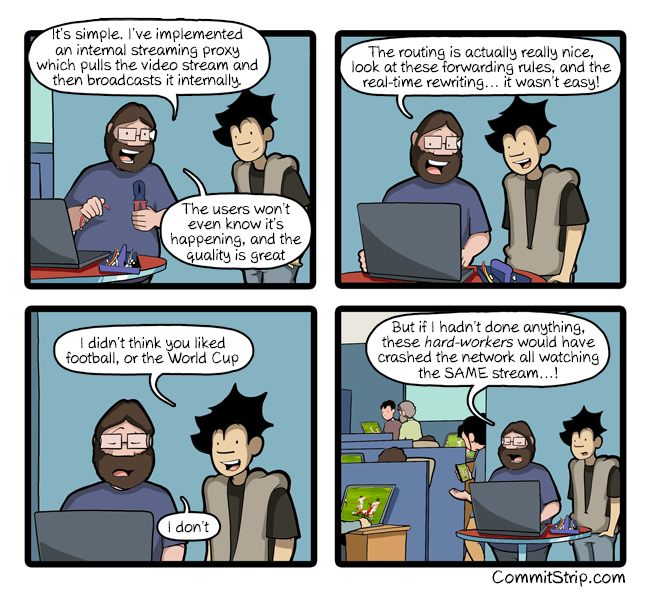
Dan Jones
Shared posts
Latter-day Saint Hymnbook and Children’s Songbook to Be Revised
SALT LAKE CITY | Monday, 18 June 2018 |
Two books of sacred music published by The Church of Jesus Christ of Latter-day Saints are about to undergo significant changes.

Those grainy Moon photos from the 60s? The actual high-res images looked so much better.
In 1966 and 1967, NASA sent five spacecraft to orbit the Moon to take high-resolution photos to aid in finding a good landing spot for the Apollo missions. NASA released some photos to the public and they were extremely grainy and low resolution because they didn’t want the Soviet Union to know the capabilities of US spy satellites. Here’s a comparison to what the public saw at the time versus how the photos actually looked:

The Lunar Orbiters never returned to Earth with the imagery. Instead, the Orbiter developed the 70mm film (yes film) and then raster scanned the negatives with a 5 micron spot (200 lines/mm resolution) and beamed the data back to Earth using lossless analog compression, which was yet to actually be patented by anyone. Three ground stations on earth, one of which was in Madrid, another in Australia and the other in California recieved the signals and recorded them. The transmissions were recorded on to magnetic tape. The tapes needed Ampex FR-900 drives to read them, a refrigerator sized device that cost $300,000 to buy new in the 1960’s.
The high-res photos were only revealed in 2008, after a volunteer restoration effort undertaken in an abandoned McDonald’s nicknamed McMoon.
They were huge files, even by today’s standards. One of the later images can be as big as 2GB on a modern PC, with photos on top resolution DSLRs only being in the region of 10MB you can see how big these images are. One engineer said you could blow the images up to the size of a billboard without losing any quality. When the initial NASA engineers printed off these images, they had to hang them in a church because they were so big. The below images show some idea of the scale of these images. Each individual image when printed out was 1.58m by 0.4m.
You can view a collection of some of the images here.
Tags: Moon NASA photography spaceGoogle adds four new features to its data management app Datally
Last year, Google launched an app called Datally that’s meant to help Android users manage the data they use on their mobile devices.
Datally offered plenty of features to keep tabs on how much data you’re using and to help mitigate that if necessary. Now Google is adding four new major features that should help even more. That includes the ability to stop “data leak” from your device by way of unused apps, a new guest mode, and more.
First up, the new guest mode. With this feature, you can set a direct limit for when someone else is using your phone. So the next time you hand over your device to a family member or friend, you don’t have to be worried that they’ll eat up a lot of your data while they’re using it.
Next is the ability to set a specific limit to the data you consume every single day. If you get close to the daily limit that you set for yourself, you’ll get a notification from the app letting you know it’s probably time to slow down. There will be a choice to be made once you reach the limit: continue on unabated or lock your data down completely so you can’t use it any more and go over the limit you’ve set.
Unused apps can leak data, and Datally wants to put an end to that. This particular feature will show you the apps you aren’t using and the ones that are using up data anyway. You’ll be able to quickly manage and triage as needed, uninstalling with just one tap if needed.
Finally, there’s a new Wi-Fi map feature which will show you the locations of nearby Wi-Fi locations. The app will make it easy to connect, too, and once you’ve disconnected, you can even leave a rating on your experience while connected.
The new features are rolling out today, so if you have Datally on your phone already, make sure it’s updated to the latest version.
Losing Your Language.
A very interesting BBC Future piece on language loss by Sophie Hardach:
“The minute you start learning another language, the two systems start to compete with each other,” says Monika Schmid, a linguist at the University of Essex.
Schmid is a leading researcher of language attrition, a growing field of research that looks at what makes us lose our mother tongue. In children, the phenomenon is somewhat easier to explain since their brains are generally more flexible and adaptable. Until the age of about 12, a person’s language skills are relatively vulnerable to change. Studies on international adoptees have found that even nine-year-olds can almost completely forget their first language when they are removed from their country of birth.
But in adults, the first language is unlikely to disappear entirely except in extreme circumstances.
For example, Schmid analysed the German of elderly German-Jewish wartime refugees in the UK and the US. The main factor that influenced their language skills wasn’t how long they had been abroad or how old they were when they left. It was how much trauma they had experienced as victims of Nazi persecution. Those who left Germany in the early days of the regime, before the worst atrocities, tended to speak better German – despite having been abroad the longest. Those who left later, after the 1938 pogrom known as Reichskristallnacht, tended to speak German with difficulty or not at all. […]
Such dramatic loss is an exception. In most migrants, the native language more or less coexists with the new language. How well that first language is maintained has a lot to do with innate talent: people who are generally good at languages tend to be better at preserving their mother tongue, regardless of how long they have been away.
But native fluency is also strongly linked to how we manage the different languages in our brain. “The fundamental difference between a monolingual and bilingual brain is that when you become bilingual, you have to add some kind of control module that allows you to switch,” Schmid says. […]
Mingling with other native speakers actually can make things worse, since there’s little incentive to stick to one language if you know that both will be understood. The result is often a linguistic hybrid.
There’s lots more good stuff there (like Cubans in Miami starting to speak more like Colombians or Mexicans), and I had personal experience with some of it, like losing my early Japanese when we left the country (though fortunately not with traumatic loss). Thanks, Trevor!
Introducing VR180 Creator, simplifying the video editing process
Dan JonesNo love for Windows.
VR180 cameras allow creators to shoot three-dimensional, immersive photos and videos using affordable cameras that are small enough to fit in your pocket.
And to make it even easier for you to create and edit high quality VR videos, we’re launching VR180 Creator on Mac and Linux. This desktop tool lets anyone edit VR180 footage with existing VR video tools.
VR180 Creator currently offers two features for VR videos. “Convert for Publishing” takes raw fisheye footage from VR180 cameras like the Lenovo Mirage Camera and converts it into a standardized equirect projection. This can be edited with the video editing software creators already use, like Adobe Premiere and Final Cut Pro. “Prepare for Publishing” re-injects the VR180 metadata after editing so that the footage is viewable on YouTube or Google Photos in 2D or VR.
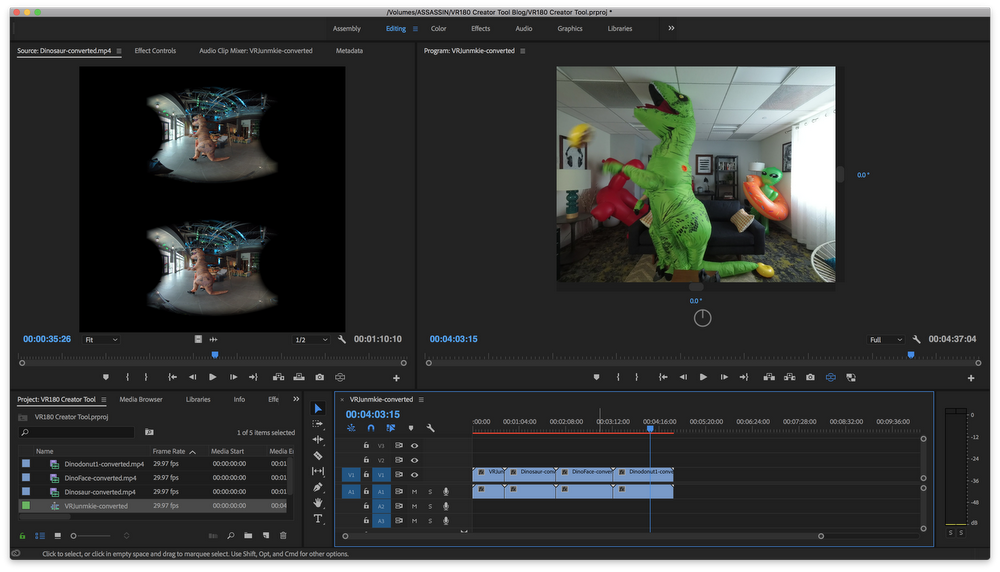
With affordable VR180 cameras and the simplified editing process provided by VR180 Creator, you can capture your memories in VR whether it is giving your viewers a tour of your home or bringing your viewers on an adventure with you. You can learn more about how to use VR180 Creator here and you can download it here.
Pixar’s New Short Film ‘Bao’ Is Weird, But Also Kind Of Essential

I recently wrote up an explainer for Bao on The Young Folks:
Bao was directed by Domee Shi, the first woman to ever direct a Pixar short…Over the course of about eight minutes, we see a dumpling become a baby boy, growing up under his mother’s love until eventually becoming too old to stay home with her. Essentially, Bao is a Chinese retelling of “The Gingerbread Man.”
I saw Incredibles 2 for the second time last night with a large audience, and I was almost more curious about how Bao would come across in front of other people. In case you haven’t seen it, Bao has a very “Pixar” plot with an absolutely shockingly weird twist that almost lampoons Pixar. It’s probably genius?
And the crowd was about as confused, laughing nervously but also gasping. Many were crying by the end. It was a whirlwind of emotion similar to previous Pixar feature films…but it also felt different, like a reasonable evolution of the stories Pixar can tell that go beyond “what if [this] had feelings?”
I fully credit the out-of-the-box thinking of Domee Shi, who conceived of the idea years ago and followed it through to its wacky conclusion. In my view, she represents the future of what Pixar can be as it moves into its next era of animated films: less safe, culturally honest, and surprising. Which is why I consider this next bit to be some seriously good news:
Last fall, Shi pitched three other original ideas to Pixar, and one of them is being developed into a feature film.
If it’s anything like Bao, I’m onboard. You can see the short film alongside Incredibles 2, which is now in theaters.
Thanks for reading this. To get updates on my theories, books, and giveaways, join my Mailing List.
Or just say hey on Twitter: @JonNegroni
The post Pixar’s New Short Film ‘Bao’ Is Weird, But Also Kind Of Essential appeared first on Jon Negroni.
Stop Shaming Little Boys for Liking Girl Characters
Stop Shaming Little Boys for Liking Girl Characters
This is so true. We've all seen it. The dad who won't let his son play with dolls or play dress-up. The mom who won't let her son wear flower crowns or get a butterfly painted on his face. The parents who won't let their son enjoy female role models because they're "for girls." We need to stop teaching our young boys this. Artist Damian Alexander drew this wonderful comic about this issue and here's what he had to say...
"Saw a lady tell her son he couldn?t have a Wonder Woman doll because ?that?s for girls? and it got me thinking about my experiences as a kid with similar situations and how society refuses to let boys have female role models. I think boys develop sexism early on from these seemingly small interactions."










Artist: Damian Alexander - facebook
Follow us on:
June 14 2018
The New Guy (Part II): Database Boogaloo
When we last left our hero Jesse, he was wading through a quagmire of undocumented bad systems while trying to solve an FTP issue. Several months later, Jesse had things figured out a little better and was starting to feel comfortable in his "System Admin" role. He helped the company join the rest of the world by dumping Windows NT 4.0 and XP. The users whose DNS settings he bungled were now happily utilizing Windows 10 workstations. His web servers were running Windows Server 2016, and the SQL boxes were up to SQL 2016. Plus his nemesis Ralph had since retired. Or died. Nobody knew for sure. But things were good.
Despite all these efforts, there were still several systems that relied on Access 97 haunting him every day. Jesse spent tens of dollars of his own money on well-worn Access 97 programming books to help plug holes in the leaky dike. The A97 Finance system in particular was a complete mess to deal with. There were no clear naming guidelines and table locations were haphazard at best. Stored procedures and functions were scattered between the A97 VBS and the SQL DB. Many views/functions were nested with some going as far as eight layers while others would form temporary tables in A97 then continue to nest.
One of Jesse's small wins involved improving performance of some financial reporting queries that took minutes to run before but now took seconds. A few of these sped-up reports happened to be ones that Shane, the owner of the company, used frequently. The sudden time-savings got his attention to the point of calling Jesse in to his office to meet.
"Jesse! Good to see you!" Shane said in an overly cheerful manner. "I'm glad to talk to the guy who has saved me a few hours a week with his programmering fixes." Jesse downplayed the praise before Shane got to the point. "I'd like to find out from you how we can make further improvements to our Finance program. You seem to have a real knack for this."
Jesse, without thinking about it, blurted, "This here system is a pile of shit." Shane stared at him blankly, so he continued, "It should be rebuilt from the ground up by experienced software development professionals. That's how we make further improvements."
"Great idea! Out with the old, in with the new! You seem pretty well-versed in this stuff, when can you start on it?" Shane said with growing excitement. Jesse soon realized his response had backfired and he was now on the hook to the owner for a complete system rewrite. He took a couple classes on C# and ASP.NET during his time at Totally Legit Technical Institute so it was time to put that valuable knowledge to use.
Shane didn't just let Jesse loose on redoing the Finance program though. He insisted Jesse work closely with Linda, their CFO who used it the most. Linda proved to be very resistant to any kind of change Jesse proposed. She had mastered the painstaking nuances of A97 and didn't seem to mind fixing large amounts of bad data by hand. "It makes me feel in control, you know," Linda told him once after Jesse tried to explain the benefits of the rewrite.
While Jesse pecked away at his prototype, Linda would relentlessly nitpick any UI ideas he came up with. If she had it her way, the new system would only be usable by someone as braindead as her. "I don't need all these fancy menus and buttons! Just make it look and work like it does in the current system," she would say at least once a week. "And don't you dare take my manual controls away! I don't trust your automated robotics to get these numbers right!" In the times it wasn't possible to make something work like Access 97, she would run to Shane, who would have to talk her down off the ledge.
Even though Linda opposed Jesse at every turn, the new system was faster and very expandable. Using C# .NET 4.7.1 with WPF, it was much less of an eyesore. The database was also clearly defined with full documentation, both on the tables and in the stored procedures. The database size managed to go from 8 GB to .8 GB with no loss in data.
The time came at last for go-live of Finance 2.0. The thing Jesse was most excited about was shutting down the A97 system and feeling Linda die a little bit inside. He sent out an email to the Finance department with instructions for how to use it. The system was well-received by everyone except Linda. But that still led to more headaches for Jesse.
With Finance 2.0 in their hands, the rest of the users noticed the capabilities modern technology brought. The feature requests began pouring in with no way to funnel them. Linda refused to participate in feature reviews because she still hated the new system, so they all went to Shane, who greenlighted everything. Jesse soon found himself buried in the throes of the monster he created with no end in sight. To this day, he toils at his computer cranking out features while Linda sits and reminisces about the good old days of Access 97.
Behold The Internet
 This comic is a complete work of fiction. That guy doesn't watch cat videos.
This comic is a complete work of fiction. That guy doesn't watch cat videos.See more: Behold The Internet
Patience
There’s something magical about a weekend. It’s where the best stuff of the week tends to live!
bonus panel
Country Time will cover illegal lemonade stand fines and fees this summer
The makers of Country Time Lemonade are running a unique promotion this summer. If you’re the parent of a child 14 or younger who has incurred a fine for running an unlicensed lemonade stand or who has paid for a permit, Country Time will “cover your fine or permit fees up to $300”. This video explains (ok, I lol’d at “tastes like justice”):
Open to legal residents of the 50 U.S. (including D.C.), who are the parents or legal guardians of a child 14 years of age or younger operating a lemonade stand. Program ends 11:59pm ET on 8/31/18 or when $60,000 worth of offers have been awarded, whichever comes first.
In a related promotion, Domino’s Pizza is working to fix potholes in streets around the US.
I guess it’s nice of these companies to step in here, but it’s sad that America’s crumbling infrastructure and antiquated legal system have become promotional opportunities for massive multinational corporations that spend millions each year trying to avoid paying local, state, and federal taxes that might conceivably go towards fixing problems like this in a non-ad hoc way. But hey, pizza and lemonade, mmmmmm.
Tags: food legal videoThe Manager Who Knew Everything
Have you ever worked for/with a manager that knows everything about everything? You know the sort; no matter what the issue, they stubbornly have an answer. It might be wrong, but they have an answer, and no amount of reason, intelligent thought, common sense or hand puppets will make them understand. For those occasions, you need to resort to a metaphorical clue-bat.
A few decades ago, I worked for a place that had a chief security officer who knew everything there was to know about securing their systems. Nothing could get past the policies she had put in place. Nobody could ever come up with any mechanism that could bypass her concrete walls, blockades and insurmountable defenses.
One day, she held an interdepartmental meeting to announce her brand spanking shiny new policies regarding this new-fangled email that everyone seemed to want to use. It would prevent unauthorized access, so only official emails sent by official individuals could be sent through her now-secured email servers.
I pointed out that email servers could only be secured to a point, because they had to have an open port to which email clients running on any internal computer could connect. As long as the port was open, anyone with internal access and nefarious intent could spoof a legitimate authorized email address and send a spoofed email.
She was incensed and informed me (and the group) that she knew more than all of us (together) about security, and that there was absolutely no way that could ever happen. I told her that I had some background in military security, and that I might know something that she didn't.
At this point, if she was smart, she would have asked me to explain. If she already handled the case, then I'd have to shut up. If she didn't handle the case, then she'd learn something, AND the system could be made more secure. She was not smart; she publicly called my bluff.
I announced that I accepted the challenge, and that I was going to use my work PC to send an email - from her - to the entire firm (using the restricted blast-to-all email address, which I would not normally be able to access as myself). In the email, I would explain that it was a spoof, and if they were seeing it, then the so-called impenetrable security might be somewhat less secure than she proselytized. In fact, I would do it in such a way that there would be absolutely no way to prove that I did it (other than my admission in the email).
She said that if I did that, that I'd be fired. I responded that 1) if the system was as secure as she thought, that there'd be nothing to fire me for, and 2) if they could prove that it was me, and tell me how I did it (aside from my admission that I had done it), that I would resign. But if not, then she had to stop the holier-than-thou act.
Fifteen minutes later, I went back to my desk, logged into my work PC using the guest account, wrote a 20 line Cold Fusion script to attach to the email server on port 25, and filled out the fields as though it was coming from her email client. Since she had legitimate access to the firm-wide email blast address, the email server allowed it. Then I sent it. Then I secure-erased the local system event and assorted other logs, as well as editor/browser/Cold Fusion/server caches, etc. that would show what I did. Finally, I did a cold boot to ensure that even the RAM was wiped out.
Not long after that, her minions the SA's showed up at my desk joking that they couldn't believe that I had actually done it. I told them that I had wiped out all the logs where they'd look, the actual script that did it, and the disk space that all of the above had occupied. Although they knew the IP address of the PC from which the request came, they agreed that without those files, there was no way they could prove that it was me. Then they checked everything and verified what I told them.
This info made its way back up the chain until the SAs, me and my boss got called into her office, along with a C-level manager. Everything was explained to the C-manager. She was expecting him to fire me.
He simply looked at me and raised an eyebrow. I responded that I spent all of ten minutes doing it in direct response to her assertion that it was un-doable, and that I had announced my intentions to expose the vulnerability - to her - in front of everyone - in advance.
He chose to tell her that maybe she needed to accept that she doesn't know quite as much about everything as she thinks, and that she might want to listen to people a little more. She then pointed out that I had proven that email was totally insecure and that it should be banned completely (this was at the point where the business had mostly moved to email). I pointed out that I had worked there for many years, had no destructive tendencies, that I was only exposing a potential gap in security, and would not do it again. The SAs also pointed out that the stunt, though it proved the point, was harmless. They also mentioned that nobody else at the firm had access to Cold Fusion. I didn't think it helpful to mention that not just Cold Fusion, but any programming language could be used to connect to port 25 and do the same thing, and so didn't. She huffed and puffed, but had no credibility at that point.
After that, my boss and I bought the SAs burgers and beer.
Google Home now supports handling three commands at once
Late last year, Google rolled out a handy feature that allowed Google Assistant, by way of its Google Home smart speakers, to handle two commands at once.
This meant you didn’t have to keep saying “Ok, Google” with each individual command, making everything a bit more streamlined. Now, the company has officially confirmed that it is rolling out support for Google Home to hear that special prompt and then keep tabs on three separate commands.
Of course, you can also say, “Hey, Google” to get the Assistant listening. Either way, once you offer the prompt and Assistant starts listening, you can ask the digital personal assistant to tell you the weather, start playing some music, and ask about your commute.
This particular feature is rolling out right now, but only for English speakers in the United States. But additional languages and regions are planned for a later rollout. This is a gradual rollout, too, so it might take a couple of days before you can actually use it.
How often do you use the Google Assistant on your Google Home speaker(s)?
Locate modern addresses on Earth 240 million years ago

Ian Webster built a tool to plot modern addresses on a map of the Earth from up to 750 million years ago. Just input an address and it’ll find where that spot of land was on the Earth at a given time. The tool defaults to a view from 240 million years ago, smack in the middle of the Pangaea supercontinent era, but you can select views from 750 million years ago right up to the present. Webster explained a bit about the project on Hacker News:
I built this by adapting GPlates (https://www.gplates.org), an academic project providing desktop software for geologists to investigate plate tectonic data. I’m amazed that geologists collected enough data to actually plot my home 750M years ago, so I thought you all would enjoy it too.
Even though plate tectonic models return precise results, you should consider the plots approximate (obviously we will never be able to prove correctness). In my tests I found that model results can vary significantly. I chose this particular model because it is widely cited and covers the greatest length of time.
The visualization is open source and Webster is working on integrating the plate techtonics and location data into that repo soon.
Tags: Ian Webster maps PangaeaFreddish, the special language Mister Rogers used when talking to children
Maxwell King, the former director of the Fred Rogers Center and author of the forthcoming book The Good Neighbor: The Life and Work of Fred Rogers, shared an excerpt of the book with The Atlantic about how much attention Rogers paid to how children would hear the language on the show. For instance, he changed the lyrics on Friday’s installment of the “Tomorrow” song he sang at the end of each show to reflect that the show didn’t air on Saturdays.
Rogers was so meticulous in his process for translating ideas so they could be easily understood by children that a pair of writers on the show came up with a nine-step process that he used to translate from normal English into “Freddish”, the special language he used when speaking to children.
1. “State the idea you wish to express as clearly as possible, and in terms preschoolers can understand.” Example: It is dangerous to play in the street.
2. “Rephrase in a positive manner,” as in It is good to play where it is safe.
3. “Rephrase the idea, bearing in mind that preschoolers cannot yet make subtle distinctions and need to be redirected to authorities they trust.” As in, Ask your parents where it is safe to play.
4. “Rephrase your idea to eliminate all elements that could be considered prescriptive, directive, or instructive.” In the example, that’d mean getting rid of “ask”: Your parents will tell you where it is safe to play.
5. “Rephrase any element that suggests certainty.” That’d be “will”: Your parents can tell you where it is safe to play.
6. “Rephrase your idea to eliminate any element that may not apply to all children.” Not all children know their parents, so: Your favorite grown-ups can tell you where it is safe to play.
7. “Add a simple motivational idea that gives preschoolers a reason to follow your advice.” Perhaps: Your favorite grown-ups can tell you where it is safe to play. It is good to listen to them.
8. “Rephrase your new statement, repeating the first step.” “Good” represents a value judgment, so: Your favorite grown-ups can tell you where it is safe to play. It is important to try to listen to them.
9. “Rephrase your idea a final time, relating it to some phase of development a preschooler can understand.” Maybe: Your favorite grown-ups can tell you where it is safe to play. It is important to try to listen to them, and listening is an important part of growing.
These are boss-level communication skills. Steps 6 & 8 are particularly thoughtful. Using language like “your favorite grown-ups” instead of “your parents” is often decried these days as politically correct nonsense but Rogers knew the power of caring language to include as many people as possible in the conversation.1
You can also see Rogers’ care in how he went back and fixed problematic language in old shows.
But as the years would go on, he would find things that had happened in old episodes that didn’t feel current, where maybe he used a pronoun “he” instead of “they” — or he met a woman and presumed that she was a housewife. So he would put on the same clothes and go back and shoot inserts and fix old episodes so that they felt as current as possible, so that he could stand by them 100 percent.
Fred Rogers understood more than anyone that paying attention and sweating the details is a form of love. It was never enough for him to let you know that he loved you. He made sure to tell you that he loved you “just the way you are” and that made all the difference.
-
As opposed to those who, for instance, refuse to use people’s preferred pronouns or can’t bring themselves to use “they/their” instead of “he/his” in writing. Those refusals are also an exercise of power, against individuals or marginalized groups, based on fear, uncertainty, and hate.↩
Inside the Growing Flat Earth Movement
Alan Burdick, writing for The New Yorker:
The unsettling thing about spending two days at a convention of people who believe that Earth is flat isn’t the possibility that you, too, might come to accept their world view, although I did worry a little about that. Rather, it’s the very real likelihood that, after sitting through hours of presentations on “scientism,” lightning angels, and nasa’s many conspiracies — the moon-landing hoax, the International Fake Station, so-called satellites — and in chatting with I.T. specialists, cops, college students, and fashionably dressed families with young children, all of them unfailingly earnest and lovely, you will come to actually understand why a growing number of people are dead certain that Earth is flat. Because that truth is unnerving.
In recent years I’ve begun to feel conflicted about the internet. On the one hand, it’s been wonderful in so many ways. I’ve personally built my entire career on the fact that the internet enables me to publish as a one-person operation. But on the other hand, before the internet, kooks were forced to exist on the fringe. There’ve always been flat-earther-types denying science and John Birch Society political fringers, but they had no means to amplify their message or bond into large movements.
You can now customize Gmail for Android’s swipe actions
Gmail for Android has supported a swipe gesture within the mobile app for quite some time, but, up until today, it has been severely limited in scope.
Swiping on an email within the Android app has archived that message no matter what, which may have been the best possible option for some users. However, swipe actions have become a normal feature within the majority of email apps these days, and the general rule of thumb has been to provide plenty of different options, like being able to quickly delete a message or snooze it for later viewing.
Gmail for Android finally supports customizable swipe actions. It’s part of the latest update for the app, and was first noticed on Friday by Android Police. Now, users can customize the left and right swipe gesture, choosing to either delete a message, mark one as read or unread, move, snooze, or archive.
To customize the option, head into Gmail for Android’s settings –> general settings –> swipe actions and choose what you’d like your swipe action to do.
The new update is available now. Are you happy to see this feature finally added to the mix?
GitLab and The Old Reader
Remember when Google Reader was shutting down, and it took forever to import your GReader stuff into The Old Reader? That’s what it’s like with importing GitHub repos into GitLab right now.
Norman, the world’s first psychopath AI
A research team at MIT’s Media Lab have built what they call the “world’s first psychopath AI”. Meet Norman…it provides creepy captions for Rorschach inkblots. A psychopathic AI is freaky enough, but the kicker is that they used Reddit as the dataset. That’s right, Reddit turns mild-mannered computer programs into psychopaths.
Norman is an AI that is trained to perform image captioning; a popular deep learning method of generating a textual description of an image. We trained Norman on image captions from an infamous subreddit (the name is redacted due to its graphic content) that is dedicated to document and observe the disturbing reality of death. Then, we compared Norman’s responses with a standard image captioning neural network (trained on MSCOCO dataset) on Rorschach inkblots; a test that is used to detect underlying thought disorders.
Here’s a comparison between Norman and a standard AI when looking at the inkblots:

Welp! (via @Matt_Muir)
Update: This project launched on April 1. While some of the site’s text at launch and the psychopath stuff was clearly a prank, Norman appears to be legit.
Tags: artificial intelligence
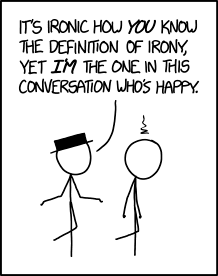


 Exactly!
Exactly!



